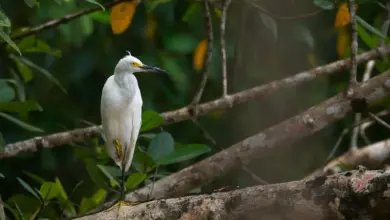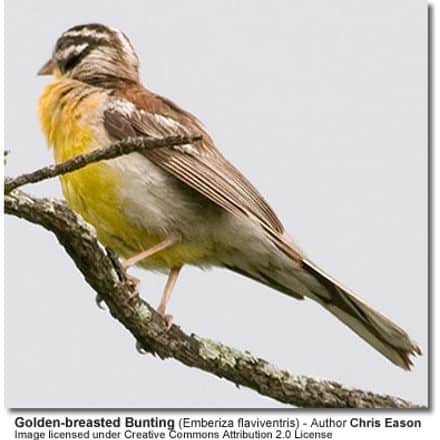Scottish Crossbills
The Scottish Crossbills (Loxia scotica) is a small passerine bird in the finch family Fringillidae. It is endemic to the Caledonian Forests of Scotland. The Scottish Crossbill was finally confirmed as a unique species in August 2006.
The Scottish crossbill is thought to have arisen from the hybridisation of the common crossbill (L. curvirostra)and the parrot crossbill (L. pytyopsittacus), and evolved to occupy a specific niche provided by the mix of plantation conifers present in Scotland. It is considered to be Britain’s only endemic bird and is thus subject to a Species Action Plan.
Essential to the conservation action for this species is an understanding of the temporal and spatial availability of conifer seed- its main food. Information on coning of 3 conifer species (Norway spruce, Sitka spruce and Scots pine) has been collected by Forest Research since the mid 1980’s. Data from this survey has been evaluated and analysed and provides insights into coning synchrony and spatial patterns of coning across Britain.
Basic information is lacking on the distribution and population size of the Scottish crossbill and the Royal Society for the Protection of Birds (RSPB) have developed methods of surveying and identifying crossbills that will be used in a national survey. Information on coning, and therefore the food resource, will be linked to the bird survey in an attempt to clarify habitat selection by the species. Any findings will have implications for forest management and design.
Stats:
- Average Size: 16 cm / 6.3 in from bill to tip of tail
- Average clutch size: 2 to 5 eggs
- Incubation: 12 to 14 days
History
The British Ornithologists Union first classed the Scottish crossbill as a separate and distinct species in 1980, and since then many ornithologists, including those in the Royal Society for the Protection of Birds (RSPB), have always reserved judgment on this notion, believing there was insufficient scientific research for its formal acceptance.
The Scottish crossbill was for a long time considered by many ornithologists to be a race of either the Common Crossbill or the Parrot Crossbill, both of which occur in the Caledonian Forest.
In trying to discover exactly what features the birds used to identify each other, experts from the RSPB investigated the calls of the three types of crossbill, and found that Scottish crossbills have quite distinct flight and excitement calls from other crossbills – some even stated they have “Scottish accents”.
Current Status
The Scottish crossbill is listed as the only bird species endemic to the British Isles, but its taxonomic status has formerly been controversial, often being considered a race of either Parrot Crossbill or Common Crossbill, both of which breed within its range. The population is thought to be less than 2,000 birds. It nests in pines or other conifers, laying 2-5 eggs.
The Scottish Crossbill breeds in the native Scots pine (Pinus sylvestris), Caledonian forests of central Scotland, but (perhaps surprisingly), often also in forestry plantations of exotic conifers, notably Larch (Larix decidua and L. kaempferi) and Lodgepole pine (Pinus contorta).
This crossbill is resident and is not known to migrate. This species will form flocks outside the breeding season, often mixed with other crossbills.
Description:
The crossbills are characterised by the upper and lower beaks crossing at their tips, which gives the group its English name. They are specialist feeders on conifer cones, and the unusual bill shape is an adaptation to assist in the extraction of the seeds from the cone. The Scottish Crossbill is a specialist feeder on the cones of pines (Scots pine and Lodgepole pine) and larch.
Adult males tend to be red or orange in color, and females green or yellow, but there is much variation.
This species is extremely difficult to separate from Common and Parrot, and plumage distinctions are negligible. The head and bill size is intermediate between and overlapping extensively with the other two, and extreme care is needed to identify this species. The metallic jip call is probably the best indicator, but even this needs to be recorded and analysed on a sonogram to confirm the identity.
Species confirmation
Scotland’s conifer woods are home to three types of crossbill –
- The Common Crossbill (with a small bill best suited to extracting seeds from the cones of spruces)
- The Parrot Crossbill (with a large bill suited to extracting seeds from pine cones)
- The Scottish Crossbill (with an intermediate bill size used to extract seeds from several different conifers).
All three are very similar in both size and plumage.
Bill structure
According to a lengthy scientific study by the RSPB, ‘Celtic’ crossbills differ in bill size from other crossbill species found in Great Britain, and just like native Scots, they have also been found to have a distinct Scottish accent or call, thought to be the method used by the birds to make sure they only attract and pair with potential mates of the same species.
In trying to discover exactly what features the birds used to identify each other, experts at RSPB investigated the calls of the three types of crossbill, and found that Scottish crossbills (as identified by bill size) have distinctive flight and excitement calls from other crossbills.
The most important evidence to come from RSPB’s long-term study in the Highlands focused on discovering if the birds mate with those with a similar bill size and call, and whether young Scottish crossbills inherit their bill sizes from their parents.
Results showed that of over 40 pairs of different types of crossbills caught, almost all matched closely for bill size and calls, so the different types of crossbills were behaving as distinct species.
Some pairs that did not match this were too few to suggest that the different types are not species, but enough to account for their genetic similarity. The fact too that the young crossbills had bill sizes alike to their parents proved that they inherited their bill sizes, further supporting the species status of Scottish crossbills.
Calls
The calls, however, can be distinguished by sonograms. This provides the basis for a method to survey crossbills and, for the first time, gain a clear picture of their numbers and distribution in Scotland and help in any conservation programmes for the species.
Conservation
The next step in the Scottish crossbill study is to establish what its population is and what habitat it requires.
The current estimate is less than 2000 birds for its global population, and a detailed survey is important to learn what the right conservation and management measures are to protect and conserve the species.
The first survey of Scottish Crossbills is due in 2008.
In future years, Scottish Crossbills could suffer from the effects of global warming.



